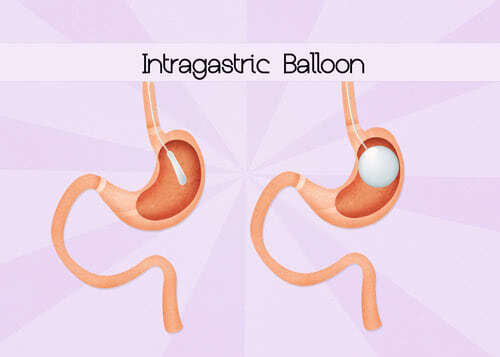Try a "Balloon Diet"!
Is Your Weight Ballooning but You Don't Want to Go Under the Knife? Try a "Balloon Diet"!
A gastric or intragastric balloon, also known as a stomach balloon is a short-term, non-surgical medical procedure that is designed to make you feel fuller quicker after a small meal.[1] The uncomfortable but fairly painless process involves inserting a soft, deflated silicon balloon into the stomach via your mouth and esophagus using an endoscope - a flexible tube containing a camera and light.[2] When the balloon reaches the stomach, it is inflated which partially fills said stomach, creating the sense of fullness.[3]
Gastric balloons have become a popular weight loss alternative, especially for those who don't fancy going under the knife and for those who have struggled losing weight through regular dieting and exercise.

Though a modern sounding procedure, the history and origins of a using a gastric balloon to imitate a sense of fullness and satiety dates all the way back to 1938 where Lebanese-American cardiac surgeon and scientist, Michael Ellis DeBakey stated in a review that bezoars - undigested or inedible material found in the gastrointestinal tract, especially the stomach[4] - led to weight loss.[5] However, the first gastric balloons that were placed intragastrically to induce weight loss occurred in the 1980s in the United States - Garren-Edwards Bubble - and in Denmark - Ballobes; and often had a spectacular failure and complication rate due the device having sharp edges and difficult placement.[6]
Nowadays, the procedure is much improved upon and is done under a light intravenous sedation, with the insertion of the gastric balloon taking between 20 to 30 minutes to place.[7] Depending on which clinic you go to, you may be able to go home the same day or stay overnight. The gastric balloon is kept in the stomach for a maximum of six months before being removed.

There is also a new type of gastric balloon called the gastric balloon pill, which involves swallowing a capsule attached to a thin tube.[8] When it reaches a position at the top of your stomach, the balloon is inflated with gas via the thin tube.[9] No anesthesia is required for the gastric balloon pill and up to three balloons can be inserted into the stomach before being removed after 12 weeks.
Gastric balloons are an approved procedure in multiple countries and cities in the United States, Europe, Canada, Mexico, India, Australia and South America.[10] If you're considering getting a gastric balloon in the Czech Republic, prices start at around 1600 Euros and usually includes anesthesia, post-op care and removal of the balloon.
Sources:
[1] Ramsey Health Care UK, '11 Things You Need To Know About A Gastric Balloon', in Ramsey Health Care - People Caring for People, published August 21st, 2014, viewed on September 23rd, 2018, https://www.ramsayhealth.co.uk/blog/2014/08/21/11-things-you-need-to-know-about-a-gastric-balloon
[2] ibid
[3] ibid
[4] 'Bezoar', in Science Direct - Pediatric Gastrointestinal and Liver Disease (Fourth Edition), viewed on September 23rd, 2018, https://www.sciencedirect.com/topics/medicine-and-dentistry/bezoar
[5] 'Gastric Balloon' in Wikipedia, viewed on September 23rd, 2018, https://en.wikipedia.org/wiki/Gastric_balloon
[7] 'Intragastric Balloon', in Mediczech viewed on September 23rd, https://www.mediczech.com/medical-treatments/bariatric-surgery/intragastric-balloon/
[8] op. cit, https://www.ramsayhealth.co.uk/blog/2014/08/21/11-things-you-need-to-know-about-a-gastric-balloon
[9] ibid
[10] 'Gastric Balloon' in Wikipedia, viewed on September 23rd, 2018, https://en.wikipedia.org/wiki/Gastric_balloon
[10] op. cit, https://www.sciencedirect.com/topics/medicine-and-dentistry/bezoar














